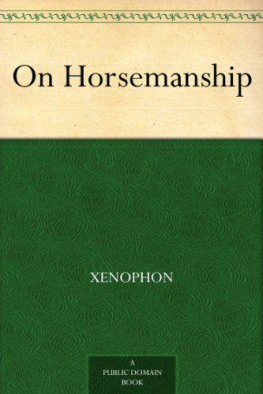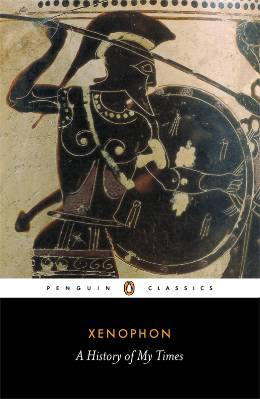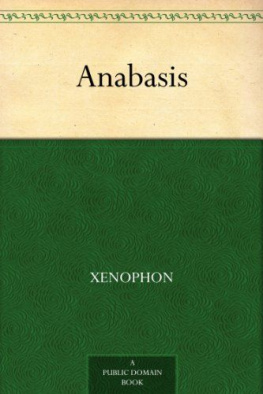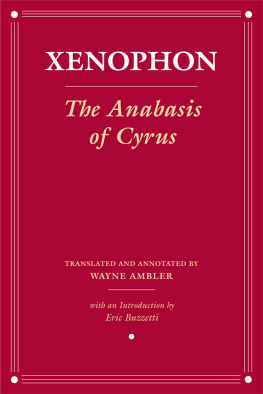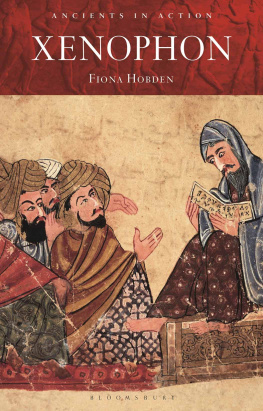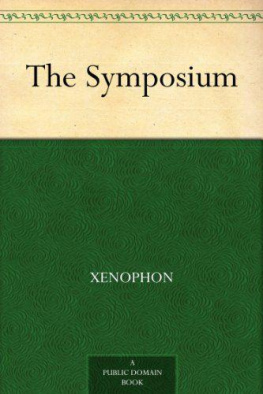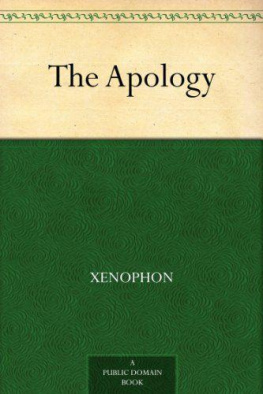Xenophon - On Horsemanship
Here you can read online Xenophon - On Horsemanship full text of the book (entire story) in english for free. Download pdf and epub, get meaning, cover and reviews about this ebook. year: 2012, genre: Romance novel. Description of the work, (preface) as well as reviews are available. Best literature library LitArk.com created for fans of good reading and offers a wide selection of genres:
Romance novel
Science fiction
Adventure
Detective
Science
History
Home and family
Prose
Art
Politics
Computer
Non-fiction
Religion
Business
Children
Humor
Choose a favorite category and find really read worthwhile books. Enjoy immersion in the world of imagination, feel the emotions of the characters or learn something new for yourself, make an fascinating discovery.
- Book:On Horsemanship
- Author:
- Genre:
- Year:2012
- Rating:3 / 5
- Favourites:Add to favourites
- Your mark:
- 60
- 1
- 2
- 3
- 4
- 5
On Horsemanship: summary, description and annotation
We offer to read an annotation, description, summary or preface (depends on what the author of the book "On Horsemanship" wrote himself). If you haven't found the necessary information about the book — write in the comments, we will try to find it.
On Horsemanship — read online for free the complete book (whole text) full work
Below is the text of the book, divided by pages. System saving the place of the last page read, allows you to conveniently read the book "On Horsemanship" online for free, without having to search again every time where you left off. Put a bookmark, and you can go to the page where you finished reading at any time.
Font size:
Interval:
Bookmark:
Xenophon the Athenian was born 431 B.C. He was a
pupil of Socrates. He marched with the Spartans,
and was exiled from Athens. Sparta gave him land
and property in Scillus, where he lived for many
years before having to move once more, to settle
in Corinth. He died in 354 B.C.
On Horsemanship advises the reader on how to buy
a good horse, and how to raise it to be either a
war horse or show horse. Xenophon ends with some
words on military equipment for a cavalryman.
This was typed from Dakyns' series, "The Works of Xenophon," a four-volume set. The complete list of Xenophon's works (though there is doubt about some of these) is:
Work Number of books
The Anabasis 7
The Hellenica 7
The Cyropaedia 8
The Memorabilia 4
The Symposium 1
The Economist 1
On Horsemanship 1
The Sportsman 1
The Cavalry General 1
The Apology 1
On Revenues 1
The Hiero 1
The Agesilaus 1
The Polity of the Athenians and the Lacedaemonians 2
Text in brackets "{}" is my transliteration of Greek text into
English using an Oxford English Dictionary alphabet table. The
diacritical marks have been lost.
Claiming to have attained some proficiency in horsemanship (1) ourselves, as the result of long experience in the field, our wish is to explain, for the benefit of our younger friends, what we conceive to be the most correct method of dealing with horses.
(1) Lit. "Since, through the accident of having for a long time
'ridden' ourselves, we believe we have become proficients in
horsemanship, we wish to show to our younger friends how, as we
conceive the matter, they will proceed most correctly in dealing
with horses." {ippeuein} in the case of Xenophon = serve as a
{ippeus}, whether technically as an Athenian "knight" or more
particularly in reference to his organisation of a troop of
cavalry during "the retreat" ("Anab." III. iii. 8-20), and, as is
commonly believed, while serving under Agesilaus ("Hell." III. iv.
14) in Asia, 396, 395 B.C.
There is, it is true, a treatise on horsemanship written by Simon, the same who dedicated the bronze horse near the Eleusinion in Athens (2) with a representation of his exploits engraved in relief on the pedestal. (3) But we shall not on that account expunge from our treatise any conclusions in which we happen to agree with that author; on the contrary we shall hand them on with still greater pleasure to our friends, in the belief that we shall only gain in authority from the fact that so great an expert in horsemanship held similar views to our own; whilst with regard to matters omitted in his treatise, we shall endeavour to supply them.
(2) L. Dind. (in Athens). The Eleusinion. For the position of this
sanctuary of Demeter and Kore see Leake, "Top. of Athens," i. p.
296 foll. For Simon see Sauppe, vol. v. Praef. to "de R. E." p.
230; L. Dind. Praef. "Xen. Opusc." p. xx.; Dr. Morris H. Morgan,
"The Art of Horsemanship by Xenophon," p. 119 foll. A fragment of
the work referred to, {peri eidous kai ekloges ippon}, exists. The
MS. is in the library of Emmanual Coll. Cant. It so happens that
one of the hipparchs (?) appealed to by Demosthenes in Arist.
"Knights," 242.
{andres ippes, paragenesthe nun o kairos, o Simon, o Panaiti, ouk elate pros to dexion keras};
bears the name.
(3) Lit. "and carved on the pedestal a representation of his own
performances."
As our first topic we shall deal with the question, how a man may best avoid being cheated in the purchase of a horse.
Take the case of a foal as yet unbroken: it is plain that our scrutiny must begin with the body; an animal that has never yet been mounted can but present the vaguest indications of spirit. Confining ourselves therefore to the body, the first point to examine, we maintain, will be the feet. Just as a house would be of little use, however beautiful its upper stories, if the underlying foundations were not what they ought to be, so there is little use to be extracted from a horse, and in particular a war-horse, (4) if unsound in his feet, however excellent his other points; since he could not turn a single one of them to good account. (5)
(4) Or, "and that a charger, we will suppose." For the simile see
"Mem." III. i. 7.
(5) Cf. Hor. "Sat." I. ii. 86:
regibus hic mos est: ubi equos mercantur, opertos inspiciunt, ne, si facies, ut saepe, decora molli fulta pede est, emptorem inducat hiantem, quod pulchrae clunes, breve quod caput, ardua cervix.
and see Virg. "Georg." iii. 72 foll.
In testing the feet the first thing to examine will be the horny portion of the hoof. For soundness of foot a thick horn is far better than a thin. Again it is important to notice whether the hoofs are high both before and behind, or flat to the ground; for a high hoof keeps the "frog," (6) as it is called, well off the ground; whereas a low hoof treads equally with the stoutest and softest part of the foot alike, the gait resembling that of a bandy-legged man. (7) "You may tell a good foot clearly by the ring," says Simon happily; (8) for the hollow hoof rings like a cymbal against the solid earth. (9)
(6) Lit. "the swallow."
(7) Al. "a knock-kneed person." See Stonehenge, "The Horse" (ed.
1892), pp. 3, 9.
(8) Or, "and he is right."
(9) Cf. Virg. "Georg." iii. 88; Hor. "Epod." xvi. 12.
And now that we have begun with the feet, let us ascend from this point to the rest of the body. The bones (10) above the hoof and below the fetlock must not be too straight, like those of a goat; through not being properly elastic, (11) legs of this type will jar the rider, and are more liable to become inflamed. On the other hand, these bones must not be too low, or else the fetlock will be abraded or lacerated when the horse is galloped over clods and stones.
(10) i.e. "the pasterns ({mesokunia}) and the coffin should be
'sloping.'"
(11) Or, "being too inflexible." Lit. "giving blow for blow, overuch
like anvil to hammer."
The bones of the shanks (12) ought to be thick, being as they are the columns on which the body rests; thick in themselves, that is, not puffed out with veins or flesh; or else in riding over hard ground they will inevitably be surcharged with blood, and varicose conditions be set up, (13) the legs becoming thick and puffy, whilst the skin recedes; and with this loosening of the skin the back sinew (14) is very apt to start and render the horse lame.
(12) i.e. "the metacarpals and metatarsals."
(13) Or, "and become varicose, with the result that the shanks swell
whilst the skin recedes from the bone."
(14) Or, "suspensory ligament"? Possibly Xenophon's anatomy is wrong,
and he mistook the back sinew for a bone like the fibula. The part
in question might intelligibly enough, if not technically, be
termed {perone}, being of the brooch-pin order.
If the young horse in walking bends his knees flexibly, you may safely conjecture that when he comes to be ridden he will have flexible legs, since the quality of suppleness invariably increases with age. (15) Supple knees are highly esteemed and with good reason, rendering as they do the horse less liable to stumble or break down from fatigue than those of stiffer build.
(15) Lit. "all horses bend their legs more flexibly as time advances."
Coming to the thighs below the shoulder-blades, (16) or arms, these if thick and muscular present a stronger and handsomer appearance, just as in the case of a human being. Again, a comparatively broad chest is better alike for strength and beauty, and better adapted to carry the legs well asunder, so that they will not overlap and interfere with one another. Again, the neck should not be set on dropping forward from the chest, like a boar's, but, like that of a game-cock rather, it should shoot upwards to the crest, and be slack (17) along the curvature; whilst the head should be bony and the jawbone small. In this way the neck will be well in front of the rider, and the eye will command what lies before the horse's feet. A horse, moreover, of this build, however spirited, will be least capable of overmastering the rider, (18) since it is not by arching but by stretching out his neck and head that a horse endeavours to assert his power. (19)
Font size:
Interval:
Bookmark:
Similar books «On Horsemanship»
Look at similar books to On Horsemanship. We have selected literature similar in name and meaning in the hope of providing readers with more options to find new, interesting, not yet read works.
Discussion, reviews of the book On Horsemanship and just readers' own opinions. Leave your comments, write what you think about the work, its meaning or the main characters. Specify what exactly you liked and what you didn't like, and why you think so.

